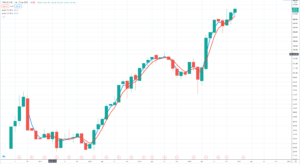
Why shares and indices rise in steps and why great stocks are always overvalued
We are apparently on the brink of a no-deal Brexit, which if the media, social and professional, is to be believed means the end of civilisation as we know it. Really! I suspect that most people will hardly notice, which I realise could be famous last words. But what most amazes me is the lack of confidence of those who regard continental Europeans and their ossified customs union, now known as the EU, as a role model.
I see mainland Europe as a text book case of how not to run a modern economy with Brussels as a retirement home for past their sell by date politicians.
It baffles me why everybody who works for the BBC or is under 40 thinks the EU is so great. We shall see how it all pans out. It may take a while but I think the day will come when we will be delighted to have thrown off the shackles.
Other EU nations may not join us but that will be because they are trapped in the euro nightmare and need the German handouts. The world I like consists of free currencies, free markets, free trade and free movement of people, all people, not just those who live in Europe.
This ties in with an observation that so much of the media has an extraordinary bias to pessimism. I have noticed this in relation to financial matters which is why I have learned to discount and ideally not even read the doom and gloom that pours out of the press.
Look at this heading from Saturday’s Daily Telegraph business section, which I would normally never read – “Are tech pioneers leading Wall Street to repeat errors of the dotcom bubble?” The whole article consisted of a litany of doomsday utterances from fund managers. It was only as a last paragraph footnote that we learned – :”Others are more sanguine.”
Taylor Tamaddon, who I salute for his wonderful name as well as his sound judgement, said this was too gloomy and that there was no comparison between what is happening now and the ‘more flash than substance’ shooting stars of the dotcom era. He added – ‘the technology driven changes taking place throughout the economy are widely acknowledged’.
I lived through the dot-com era and remember that so many companies were ideas with business models premised on a wired world that did not exist at that stage. As soon as investors lost confidence and the stream of fresh equity capital dried up a whole generation of companies were revealed as non-viable.
The current situation is very different. Many exciting businesses are still not profitable but that is by design. They are choosing growth and the vital task of grabbing territory over short-term profits and that is the right choice. Many loss making businesses are cash generative and self-funding. Look at Amazon, which grew rapidly for years while making losses but not needing to tap investors for fresh capital.
My guess is that many of the doomsters only look at macro numbers and don’t do what I do, which is to read what the companies are saying about the progress they are making and the very real opportunities they are exploiting.
There is a whole generation of businesses floated in the new millennium, which have grown sales by 10 times or more in a decade. Why wouldn’t investors be excited by businesses delivering that level of progress.
The doomsters are worried by the frenzied dealings in just floated businesses like Airbnb and DoorDash. The latter is a food delivery business,which plans to create a world where everything can be ordered online and delivered to your doorstep and it is growing very fast.
I have not yet studied the Airbnb prospectus but it is obvious that the business concept is great (Uber for homes) and the business has grown dramatically, while dealing with an incredibly challenging period. The advantage of the float is that the group is now well funded to exploit the huge opportunity it is addressing. I don’t know what is the right price for the shares, who ever does, and Uber has been a bumpy ride since its IPO but these are real businesses, not dot com bubbles.
Investors generally should realise that when it comes to predicting the future trend of stock markets there are no experts. The only thing we do have, which is useful, is common sense. Simple observation tells us that stock markets, especially Wall Street, spend most of the time going up and over prolonged periods make incredible progress.
In January 1932 the S&P 500 was five (that’s right – 5). The latest level is 3,663. I decided, when I was old enough to be aware of stock markets that I would spend my life as a bull because that way (a) I would be right most of the time and (b) I would be right in the end.
The technology revolution
And then something happened, which gave me even more conviction in my bullishness. The industrial revolution gave way to the technology revolution and this revolution is changing the world at an accelerating rate and in a way which is enabling a growing number of companies to grow at rates never before sustained by so many companies for so long and to become bigger than any corporations in history.
Not only has this ushered in an extraordinary period of growth and progress for global shares led by Wall Street but it may also still be at an early stage – just beginning, to use the terminology of so many CEOs of fast growing US-quoted businesses.
This is no time to be moaning about bubbles. This is a Carpe Diem moment as it says on my wrist bracelet. It’s time to seize the day.
Climbing in a series of steps
When I encounter a share for the first time, the first thing I do is look at the chart. Is it broadly going higher? If it isn’t I am unlikely to be interested. Then I check out the fundamentals. Is it what I call a 21st century business; doing something that is likely to prosper in an increasingly technology-driven world. I look at the performance, the growth, the story, the leadership and what management say about their plans.
I sometimes sum up what I am looking for as 3G (great story, great chart, great growth). I also look for that quality which is harder to sum up in words, some magic quality about what they are doing that suggests that this business is special.
I also look for a strong tail wind. For example, I am more interested in e-commerce than bricks and mortar commerce, fintech than traditional banking, software as a service than traditional packaged software, electric cars than fossil fuel cars and so on although I recognise than businesses can change and reinvent themselves. Witness the exciting things happening at Walt Disney (see below).
Once I have established that a share meets my criterion and remember that I am only interested in growth shares, I add it to one of my various tables some of which have grown very large over the years even though I periodically cull my master table to eliminate shares in companies, which I believe have lost the plot.
In just the same way as I make the common sense assumption that indices like the S&P 500, the Nasdaq Composite, Nasdaq 100, Nasdaq Technology index and Philadelphia Semiconductor index are going to forge steadily higher over time, I assume the same (unless proved different) about shares in exciting individual companies.
Let’s put this in a more extreme way. I call companies valued at over US$1 trillion super behemoths. There are presently four such super behemoths in the world – Apple, Amazon, Alphabet and Microsoft. Ten years from now I think there will be more, perhaps many more. As a wild guess I think that by 2030 there will be over 100 companies in the world valued at over $1 trillion and there will be some over $10 trillion.
Behemoths for me are companies valued at over $100bn. This is still a select club but more companies are joining, not every day but certainly ever month. By 2030 I think the number of behemoths will be over 1,000 with many Chinese businesses joining the Americans in reaching this elite level.
Once I have established that a share is classic 3G I can take timing decisions based on the price action, which is where the steps come in. Shares and indices don’t go up in a straight line. They go up, become overbought, hit profit-taking, react, trade sideways for a while and then resume their climb.
On a chart this can look like a series of steps and many of the charts featured in a typical issue of Chart Breakout/ Great Charts by Quentinvest will feature this step pattern.
It can also apply to indices. Since 2009 my favourite index, the Nasdaq 100, has risen in a series of steps. If I look at the chart I can identify eight steps. Each time it trades sideways/ down for a while before ultimately breaking higher. In total the index has risen 12-fold since 2009, which explains why so many individual shares are doing well.
Incidentally an ETF called QQQ broadly tracks the Nasdaq 100 index and I have (a) recommended this ETF 19 times in QV for ETFs – typically whenever it gives a buy signal based on the various systems I use. It is a very good idea to have a few QQQ in your portfolio as the nearest thing to a guaranteed winner in investment.
Intriguingly the Nasdaq 100 is tracing out a step at the moment. Since we are in the fifth month of trading sideways this is quite an important step. It may already have broken higher but either way (a) I expect the important breakout to be up not down and (b) I would regard a close above 12,400 as a buy signal.
The upside breakout does not come with a guarantee. Markets can die, out of nowhere, just as the indices did in March when the full horror of the Covid-19 crisis started to become apparent. But even that is just a passing phenomenon. Share markets plummeted in March yet by June they were hitting new peaks.
What can be hard to deal with is the sheer volatility of some of the most exciting and most heavily followed shares. One of my favourites is Carvana (on line used car sales at a business led by Stanford and Harvard graduates), which I was going to feature in this issue until I decided that it has featured so many times already. In March 2020 the shares fell from a peak $116 to $22. The latest price is $258. The volatility is almost unbelievable.
If you are wondering they crashed because the company holds a large stock of used cars funded by borrowed money and investors feast that lockdown would see dramatic writedowns in the value of those cars. Even the company was worried and took action to cut costs and raise fresh equity capital.
In the event, like so much of the funk about lockdowns the situation was not nearly so bad as feared and the next problem they encountered at Carvana was huge demand, which they were unable to meet because they had temporarily stopped buying cars.
In the same way it can be timely to buy an index or related ETF on the breakout from a step – a period of sideways trading it can also make sense to buy individual shares when they break out from a step. At any given moment in a bull market this is happening with loads of shares so there will always be loads of opportunities.
Good shares are almost always overvalued because optimistic investors will start to discount in the price the value they see being created in the future. If you are unwilling to pay for this you will find ti difficult to buy shares in exciting companies because they nearly always look expensive. As long as investor stay broadly positive exciting shares can stay expensive looking for ever while still climbing higher.
Warren Buffett never sells because he doesn’t know when to sell. If he did he would sell and buy back cheaper. The truth is nobody knows when to sell and you don’t need to in order to make money. Far more important is to choose wisely when you buy shares.
High powered chart breakouts
- Afterpay/ APT Buy @ A$101
- AptarGroup/ ATR Buy @ $130
- BiliBili/ BILI Buy @ $75.5
- Bill.com/ BILL Buy @ $143
- Chegg/ CHGG Buy @ $81.5
- Chewy/ CHWY Buy @ $85.0
- Coupa Software/ COUP Buy @ $318
- Disney (Walt)/ DIS Buy @ $175
- Etsy/ ETSY Buy @ $170
- Fair Isaac/ FICO Buy @ $511
- HelloFresh/ HFg Buy @ €61.40
- Hubspot/ HUBS Buy @ $391
- O’Leary Global Internet Giants/ OGIG Buy @ $52.81
- ITM Power/ ITM Buy @ 376p
- LVMH/ LVMH Buy @ €503
- MercadoLibre/ MELI Buy @ $1606
- MongoDB/ MDB Buy @ $340
- RingCentral/ RNG Buy @ $355
- Roku/ ROKU Buy @ $330
- Twilio/ TWLO Buy @ $342
Afterpay APT Buy @ A$101 MV: A$27.4bn Next figures: 3 March 2021
Afterpay is one of the key players in the buy now pay later (BNPL) market. They dominate ANZ, are growing explosively in North America and the UK, are about to launch in mainland Europe andf are even dipping a toe in the water in Asia. It is a very competitive market with even PayPal launch a copycat product. What makes APT special is the leadership and the execution. These guys are the ones to beat and they are hugely ambitious. The shares were strong on Friday after the group revealed strong progress in its newest market in Canada including more retailers signing up to the service. In November the group reported monthly sales on the platform exceeded $2bn and were more than double the year earlier figure.
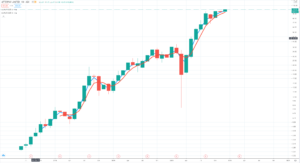
AptarGroup ATR Buy @ $130 MV: $8.4bn Next figures due: 8 February
AptarGroup is a leading global supplier of a broad range of innovative dispensing, sealing and active packaging solutions for the beauty, personal care, home care, prescription drug, consumer health care, injectables, food and beverage markets. Latest results were good. “Our Pharma business, which is the best-of-breed global leader in drug delivery solutions and services and has been a very consistent growth franchise for many years, turned in another impressive performance.This was in part due to solid underlying demand for existing medicines during the pandemic, such as influenza vaccines, and allergy and asthma treatments, that are administered using our drug delivery devices and components for injection systems. We also performed well in other markets and grew core sales in the food, personal care and home care markets.
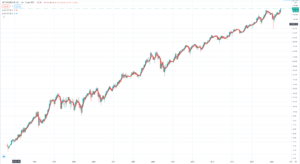
BiliBili BILI Buy @ $75.50 MV: $19.8bn Next figures: 3 March 2021
Bilibili started as a content community inspired by anime, comics and games, or ACG, and has evolved into a full-spectrum online entertainment world covering a wide array of genres and media formats, including videos, live broadcasting and mobile games. The Chinese mainland business launched in 2009 and growth has been explosive. “Our user base hit a record high in Q3 2020. In August, our MAUs [monthly average users] exceeded the 200m milestone, marking a new monthly record. Total MAUs for the third quarter were up 54pc to 197m, and DAUs were up 42pc to 53m, both on a year-over-year basis. Mobile users also continued to grow at a faster pace. Mobile MAUs were up 61pc year-over-year to 184m in the third quarter. Our users are highly engaged, spending an average of 81 minutes per day on our platform, making Bilibili one of the stickiest video communities in China. {Even so} there are large groups of potential users who are just beginning to learn about us.”
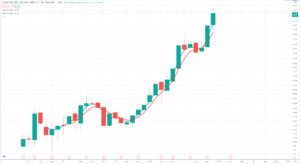
Bill.com BILL Buy @ $143 MV: $11.3bn Next figures : 4 February 2021
Bill.com helps its customers, mostly SMBs [small and medium sized businesses] engage with their suppliers and automate back office functions like payments. The business is growing rapidly “Core revenue [for Q1 2021], which we define as subscription plus transaction revenue, grew by 53pc year-over-year to $43.8m. At the end of the first quarter, we achieved a company milestone by surpassing the 100,000-customer mark, with overall customer growth of 27pc year-over-year.” The company believes it operates one of the largest B2B networks in the United States and this is driving especially strong growth in transaction revenue. “Transaction revenue increased to $19.2m in Q1, accelerating to 83pc year-over-year growth. Bill.com cautions that more challenging comparisons will likely lead to lower growth rates for transaction revenues through the rest of fiscal 2021. Even so the shift in emphasis to transaction revenue is likely to be a continuing feature of growth going forward.
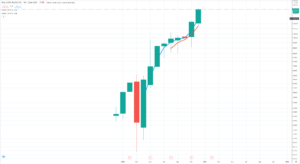
Chegg CHGG Buy @ $81.50 MV: $10.6bn Next figures: 15 February 2021
Chegg is the leading student-first interconnected learning platform, which is on-demand, adaptive, personalizsed, and backed up by a network of human help. In 10 years there have been dramatic changes to higher education in the USA. As Chegg says “We have worked hard to realign the education industry by focusing on students first. And we are making a serious impact.” As Ceo. Dan Rosenscheig, put it after reporting a 64pc increase in Q3 revenues, “We have always said that the future of education was inevitable; to become increasingly online, on demand, and more affordable. The trends we are seeing in the industry and the momentum we are experiencing globally give us the confidence to raise our guidance again for 2020 and provide our initial outlook for 2021.” The group also reported 3.7m Chegg Services subscribers, an increase of 69pc in a year and sees a continuing large opportunity as education goes online.
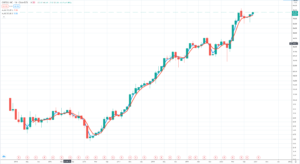
Chewy CHWY Buy @ $85 MV: $35bn Next figures: 1 April 2021
Launched in 2011 Chewy claims to offer the personalized service of a neighborhood pet store alongside the convenience and speed of e-commerce. On 4 December CEO Sumit Singh was named to the 2020 ‘Bloomberg 50’ – Bloomberg Businessweek’s annual list of innovators, entrepreneurs, and leaders who have changed the global business landscape over the past year. The group is growing fast. “Q3 net sales increased 45pc to $1.78bn with Autoship [repeat deliveries] representing 69.2pc of total sales. We added 1.2m net active customers ending Q3 with 17.8m active customers.” The group is moving strongly into pet healthcare. “As part of our goal to make pet healthcare more affordable and accessible, we recently launched Medication Compounding and Connect with the Vet, our proprietary telehealth platform.” It also has a fast growing pharmacy operation. “Total pharmacy operations are expected to generate over $500m of gross revenue this year, which we believe makes us the largest e-commerce pet pharmacy in the U.S.”
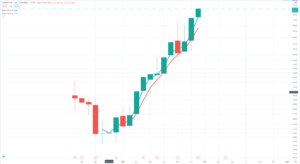
Coupa Software COUP Buy @ $318 MV: $22.9bn Next figures: 16 March 2021
Coupa Software is a leading provider of BSM [business spend management] solutions. They connect hundreds of organizations with more than 5m suppliers globally to provide greater visibility into and control over how companies spend money. Using their platform, businesses are able to achieve savings that drive their profitability. Just reported Q3 results showed the group “continuing to execute against their massive market opportunity.” They delivered multiple global marquee customer wins and go-lives, their corporate and mid-market businesses are scaling and their cumulative spending management is now well over $2.1 trillion. Q3 revenue reached $133m with 30pc calculated billings growth. The group saw more user groups, training sessions, click-throughs on email campaigns and downloading of content by customer prospects in Q3, than it saw in Q1 and Q2 combined suggesting strong progress as as when economic conditions improve.
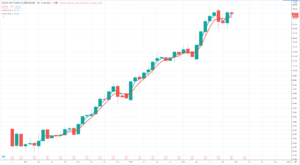
Walt Disney DIS Buy @ $169 MV: $318bn Next figures: 9 February 2021
Walt Disney shares exploded higher on Friday in the aftermath of an investor day which delivered exciting news especially about the success of Disney’s relatively newly launched DTC [direct to consumer] businesses. It doesn’t seem that long ago that Disney was supplying its DTC content via Netflix – not any more. It is now apparent that DTC is rapidly becoming Disney’s biggest business and the preeminent delivery mechanism for the incredible content developed by the group. The day revealed that the group has over 130m streaming subscribers and that for an expanded package of content the monthly subscription price is climbing by $2 to $8.99, which should have a big impact on total revenues. The group also revealed that encouraged by its huge subscriber base the group has a spectacular pipeline of exciting new content drawing on the many valuable properties within an empire expanded by the acquisition of 20th Century Fox.

Etsy ETSY Buy @ $170 MV: $21.4bn Next figures: 2 March 2021
Etsy is the e-commerce site for arts and crafts type goods connecting millions of buyers and sellers from nearly every country around the world. The group recently delivered stunning Q3 2020 results with quarterly GMS [gross merchandise volume] rising 116pc to $2.6bn and revenue up 129pc to $451m with ebitda [earnings, before interest, tax, depreciation and amortisation] of $151m. Total buyers on the platform have reached 138m of whom active buyers [in the last year] total 69m. Many of these are buying face masks but many are buying something else and either way awareness of the platform is exploding. “If we look at the second quarter of 2020, you’ll see that overall e-commerce grew at an astonishing 45pc year-over-year. That number would have been unthinkable a year ago. But Etsy grew more than twice as fast and that growth was sustained in Q3 so the group continues to gain market share within a booming e-commerce market.
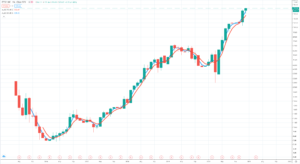
Fico FICO Buy @ $511 MV: $14.9bn Next figures due: 4 February 2021
Fico, formerly known as Fair Isaac and famous for its FICO scores is a data analytics business with its roots in credit scoring. These are used by financial institutions to making lending decisions and by consumers to learn how good is their creditworthiness. “In our fourth quarter, we reported record revenue of $374m, up 23pc over last year. On a non-GAAP basis, eps of $3.25 was up 62pc. Q4 free cash flow was $135m, up 51pc from last year. Total fiscal year ’20 free cash flow was $343m, up 45pc from fiscal ’19. In our Decision Management segment, we continue to prove that we are gaining traction with our new technology. We again delivered our largest DMS revenue quarter ever, up 36pc from last year’s fourth quarter. Our bookings were even more impressive. We signed $99m in new DMS deals this quarter, up 62pc from the same quarter last year.”
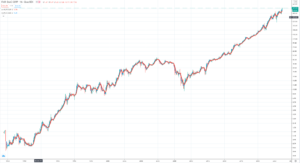
Hubspot HUBS Buy @ $391 MV: 13bn Next figures: 16 February 2021
Over 95,000 customers in more than 120 countries use Hubspot’s software platform to attract and engage customers. Revenue growth was 32pc in Q3 with a record total customer growth at 39pc year-over-year, surpassing 95,000. The growth in the third quarter is a story of digital transformation tailwind combined with excellent execution to build and deliver a terrific product for customers. A big focus for 2020 is on building a CRM platform that couples an increasingly powerful enterprise back end with an intuitive consumer-grade front end. “The really exciting thing that happened since we spoke last was the release of Sales Hub Enterprise, which leverages these primary colors – reporting, content, messaging, data and automation – as custom objects, as proposal, as advanced sales automation and as accounting integrations like NetSuite, QuickBooks and Xero to our CRM. This was a huge release for our customers and partners.”
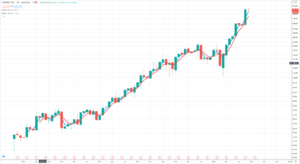
O’Shares Global Internet Giants ETF OGIG $52.81
OGIG is unusual among ETFs in that it is actively managed (most ETFs are passive index trackers) according to a set of rules. I like it because the fund is totally growth and momentum focused such that many of the shares in the portfolio are ones that have featured in CB. Four of the 10 largest holdings are technology businesses active in mainland China, which is benefiting from the growing impact of a large and increasingly prosperous middle class. The total list of holdings is very impressive and many of the names will be familiar to readers of Chart Breakout and subscribers to Quentinvest for Shares. OGIG itself is a constituent of the QV for ETFs portfolio.
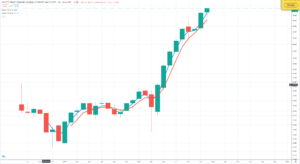
ITM Power ITM Buy @ 376p MV: £2.07bn Next figures: 27 January
ITM Power Plc designs and manufactures products which generate hydrogen gas, based on Proton Exchange Membrane (PEM) technology. This technology only uses electricity (renewable) and tap water to generate hydrogen gas on-site and has a product offering capable of being scaled to 100MW+ in size. The company says the global market for electrolysis is rapidly developing and so is ITM Power. In order to achieve cost reduction it is building the world’s largest electrolysis plant (the size of two football pitches) in Bessemer Park with funding from various state bodies. ITM uses patented technology in a process called electrolysis to convert water into hydrogen and oxygen. The process produces zero greenhouse gas emissions. The group has three major projects under way but is on what some would regard as a highly speculative valuation given almost no turnover.
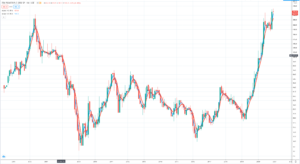
LVMH LVMH Buy @ €503 MV: €253bn Next figures: 26 January 2021
French-based LVMH is the world’s ultimate luxury goods business. It has 75 businesses, known as houses, it had turnover in 2019 of €53.7bn and it has 163,000 employees. The jewel in the crown is Louis Vuitton itself, which may be only one of the houses but is in a league of its own for sales, profits and sustained growth. Louis Vuitton is to LVMH what Hermes is to Hermes and Gucci is to Kering. It is no coincidence that LVMH creator, Bernard Arnault, tried to buy Hermes and only lost Gucci after a bitter battle for control with Gucci. The virus with its impact on the all-important travel and tourism markets has been a huge negative for the group with revenue down 21pc in the first nine months. However things are already improving. “Revenue was down 7pc in the third quarter, with a return to growth in Cognac and Fashion & Leather Goods and in all regions, notably in the United States, and in Asia.
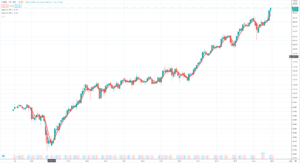
MercadoLibre MELI Buy @ $1606 MV: $80bn Next figures: 25 February 2021
MercadoLibre is the king of ecommerce in South America, which is growing fast in central America, notably Mexico and which has a spectacularly fast-growing online payments operation. “MercadoLibre’s gross merchandise volume growth accelerated to 117pc. At the regional level, Brazil and Argentina accelerated to 74pc and 242pc year on year respectively. Mexico’s performance is notable given how COVID-19 impacted the region, delivering yet another quarter of GMV growth above 100pc, also on an FX-neutral basis. The growth of our Mexican business has been remarkable over the past few quarters. In fact, our Mexican business is already at a size comparable to that of Argentina. This is a clear indicator of not only the phenomenal execution we’ve delivered, but the large opportunity that still lies ahead for us in Mexico.Mercado Pago reached almost 60m unique payers during the quarter, adding 7.5m payers, mainly attributable to Brazil. Total TPV grew by 161pc year over year during the quarter. Our off-platform payments business accelerated sequentially to 197pc year on year.”
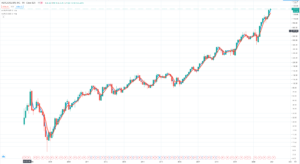
MongoDB MDB Buy @ $340 MV: $20bn Next figures due: 17 March 2021
“In Q3, we generated revenue of $150.8m, a 38pc increase and above the high-end of our guidance. We grew subscription revenue 39pc. Atlas revenue grew 61pc year-over-year and now represents 47pc of revenue. And we had another strong quarter of customer growth ending the quarter with over 22,600 customers. On the self-serve side, our continued efforts to broaden our digital marketing funnel have resulted in over 2,000 net Atlas customer additions in Q3. Our self-serve business increasing is not just an important revenue generator in its own right, but also a source of leads for our sales force. Strong self-serve net additions in Q3 indicates that this flywheel effect will continue in the future. It is clear the global pandemic is only accelerating the existing trends that are a significant catalyst for our business. These customers don’t view us as just another database, but as a core platform to enable them to drive more innovation and growth for their business.”

RingCentral RNG Buy @ $355 MV: $31.8bn Next figures: 15 February 2021
“With much of the global workforce continuing to work from home, we see that cloud communication solutions are becoming a core tenet of business continuity. RingCentral’s importance to customers for their communication and collaboration needs continues to increase. Leveraging these megatrends, we saw continued strong adoption of RingCentral as our customers are going through their digital transformation journeys. For Q3, total ARR [annual recurring revenue] grew 34pc year over year to $1.2bn. Individually, each mode; message, video, and phone, is important but seamless integration across these three modalities is what makes RingCentral a standout in the enterprise cloud communications space. Our business has never been stronger and we see tailwinds continuing. Our global MVP [message, video & phone] platform, and a unique ecosystem of strategic relationships, give us preferential access to over 180m users worldwide for nearly half of the on-premise PBX installed base. The cloud is winning and RingCentral is winning in the cloud, and we believe the best is yet to come.”
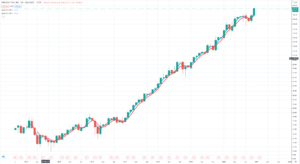
Twilio TWLO Buy @ $342 MV: $51bn Next figures: 10 February 2021
“We delivered another outstanding quarter. Our success reflects the value proposition that Twilio’s platform offers businesses: digital engagement, software agility and cloud scale. We announced the Twilio Flex ecosystem, enabling customers to access more than 30 validated solutions from partners including Google, Salesforce, Zendesk, and Collabria, all built to accelerate contact centre projects. Usage of Twilio Video has skyrocketed, and we want to get Video in the hands of as many developers as possible.We also recently announced our intent to acquire Segment, the leading customer data platform. The combination of Segment and Twilio means that we will be able to help any business make their customer engagement across every channel more personalized, timely and impactful.This is a step toward our vision of building the world’s leading customer engagement platform. Our focus on growing our enterprise presence, expanding internationally and growing our partner ecosystem continues to drive great outcomes as companies turn to Twilio’s customer engagement platform, and our opportunity is expanding as a result.”
